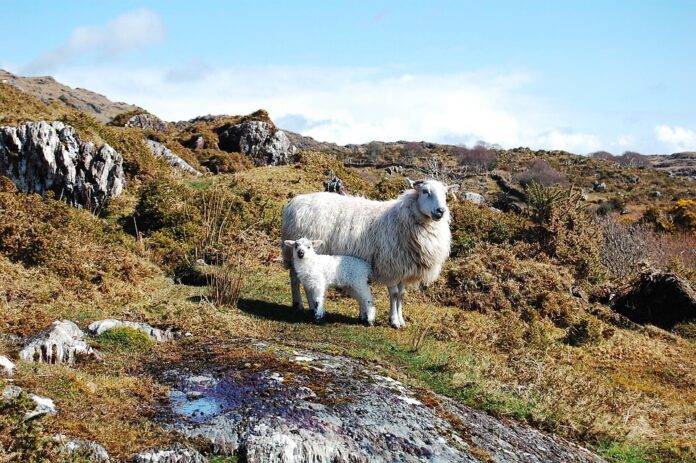Introduction
The global agricultural landscape is undergoing significant changes due to climate change, leading to more frequent and severe droughts. As a result, sustainable farming practices are becoming increasingly important. Sheep farming, in particular, has gained attention for its adaptability and contribution to sustainable agriculture. This report focuses on the top 10 drought-resistant sheep breeds that are well-suited for sustainable farming practices.
Importance of Drought-Resistant Breeds
Drought-resistant sheep breeds are essential for farmers seeking to maintain productivity during dry spells. These breeds possess unique physiological adaptations that allow them to thrive in arid conditions while minimizing resource use. By choosing drought-resistant breeds, farmers can enhance the sustainability of their operations, reduce feed costs, and ensure the welfare of their livestock.
Top 10 Drought-Resistant Sheep Breeds
1. Dorper Sheep
The Dorper sheep, originating from South Africa, is renowned for its hardiness and adaptability to arid environments. With a high growth rate and excellent meat quality, Dorper sheep can thrive on sparse grazing. They require relatively low maintenance and can tolerate heat well.
– Average weight: 90-150 pounds
– Market price: Approximately $200-$300 per head
– Annual wool production: Minimal, primarily raised for meat
2. Katahdin Sheep
Katahdin sheep are a hair sheep breed developed in the United States, known for their resistance to parasites and ability to thrive on marginal pastures. They are excellent for meat production and require less shearing compared to wool breeds.
– Average weight: 100-250 pounds
– Market price: Approximately $250-$400 per head
– Annual wool production: None (hair sheep)
3. St. Croix Sheep
The St. Croix sheep breed, also from the United States, is known for its adaptability to hot climates and drought conditions. This breed is excellent for meat production and has a high resistance to parasites and disease.
– Average weight: 90-150 pounds
– Market price: Approximately $150-$250 per head
– Annual wool production: None (hair sheep)
4. Barbados Blackbelly Sheep
Barbados Blackbelly sheep are known for their hardiness and ability to thrive in hot, dry climates. They have excellent meat quality and are used primarily for meat production rather than wool.
– Average weight: 90-150 pounds
– Market price: Approximately $150-$250 per head
– Annual wool production: Minimal
5. Texel Sheep
Texel sheep, originating from the Netherlands, are known for their muscle development and meat quality. They adapt well to various climates, including arid conditions, and can efficiently convert low-quality forage into high-quality meat.
– Average weight: 120-200 pounds
– Market price: Approximately $300-$500 per head
– Annual wool production: Approximately 8-10 pounds
6. Merino Sheep
While Merino sheep are primarily known for their wool, certain lines have demonstrated remarkable drought resistance. They can adapt to dry conditions, making them suitable for sustainable farming in arid regions.
– Average weight: 100-200 pounds
– Market price: Approximately $250-$400 per head
– Annual wool production: 10-15 pounds
7. Australian White Sheep
The Australian White breed is a relatively new breed developed for meat production. They are known for their resilience to drought and heat, making them an excellent choice for sustainable farming in dry regions.
– Average weight: 100-200 pounds
– Market price: Approximately $300-$450 per head
– Annual wool production: Minimal
8. Icelandic Sheep
Icelandic sheep are hardy and well-adapted to harsh climates, including drought. They produce high-quality meat and wool, making them a dual-purpose breed well-suited for sustainable farming.
– Average weight: 100-150 pounds
– Market price: Approximately $250-$350 per head
– Annual wool production: 8-12 pounds
9. Romney Sheep
Romney sheep are known for their adaptability to various climates, including drought-prone areas. They are primarily raised for their wool but also produce good-quality meat.
– Average weight: 100-200 pounds
– Market price: Approximately $200-$300 per head
– Annual wool production: 8-10 pounds
10. Cheviot Sheep
Cheviot sheep are hardy and well-suited for rough, hilly terrain, making them ideal for sustainable farming practices in dry regions. They produce high-quality meat and wool, providing farmers with multiple income streams.
– Average weight: 100-150 pounds
– Market price: Approximately $200-$350 per head
– Annual wool production: 8-10 pounds
Economic Considerations
When selecting drought-resistant sheep breeds, farmers should consider the economic implications. The initial investment in breeding stock can vary significantly, with prices ranging from $150 to $500 per head based on breed and quality. Additionally, the cost of feed and maintenance should be factored in, particularly in arid regions where foraging may be limited.
The average annual income from sheep farming depends on multiple factors, including the breed, production goals, and market conditions. For instance, meat production can yield an average of $2.50-$5.00 per pound, while wool production typically ranges from $1.00 to $3.00 per pound, depending on quality.
Challenges and Considerations
While drought-resistant sheep breeds offer significant advantages, farmers must also be aware of potential challenges. These can include:
– Market fluctuations: Prices for sheep and their products can vary significantly based on market demand.
– Disease management: Even drought-resistant breeds can be susceptible to diseases, requiring proactive health management.
– Resource availability: Farmers must ensure access to adequate water and grazing resources, even in drought conditions.
Conclusion
Drought-resistant sheep breeds represent a viable solution for sustainable farming in arid regions. By selecting breeds such as Dorper, Katahdin, and St. Croix, farmers can enhance their resilience against climate challenges while maintaining productivity. The economic benefits of these breeds, coupled with their adaptability, make them an attractive option for the future of sheep farming in a changing climate.
[Read More: Global Sheep Industry Report 2025: Market Trends & Forecasts]




